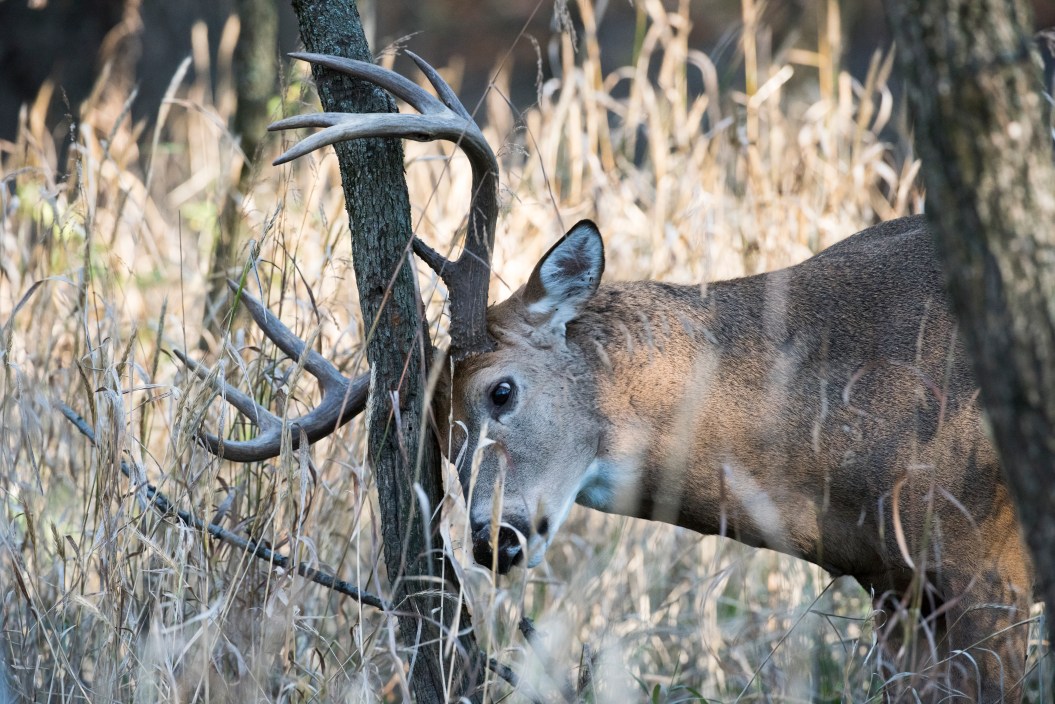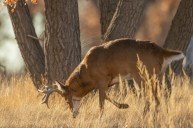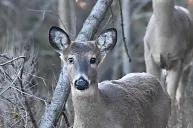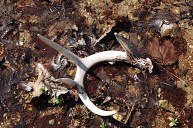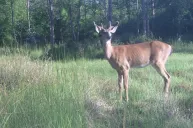New hunters might hear the term buck rub when talking about deer hunting. What are buck rubs, what do they mean, and why do bucks make them?
A rub is the wound or scar that deer leave on trees after they have rubbed them raw. It looks like a portion of damaged bark that has exposed the softer flesh of the tree underneath. Whitetail deer create these markings by rubbing their antlers and the top of their head on trees. They do this as a means to scrape the velvet off their antlers, leave scent, mark their territory or announce their presence. Other reasons include releasing the hormonal tension that comes during the annual rut and to strengthen the neck and shoulder muscles, which they'll use for sparring, also during the rut.
A buck rub is one of the most common sign of buck activity that deer hunters look for when scouting an area. Not to be confused with a deer scrape, (more on that later) buck rubs happen when a buck literally rubs his antlers on a big trees, small trees, bushes, or even telephone poles, often removing the bark and leaving it hanging in obvious strands that even the most novice of hunters can easily recognize. They are proof that a buck has traveled through the area at some point.
Deer rubs are essentially signposts that deer leave all around the forest every year, leaving clues as to their whereabouts and activities. When whitetail hunters become buck rub detectives, they can glean lots of information about the behavior of the whitetails that left the markings behind. Let's dive into buck rubs, the science behind why big bucks make them, and how to maximize the benefit the next time you find one (hopefully this upcoming hunting season).
What Do Buck Rubs Mean?
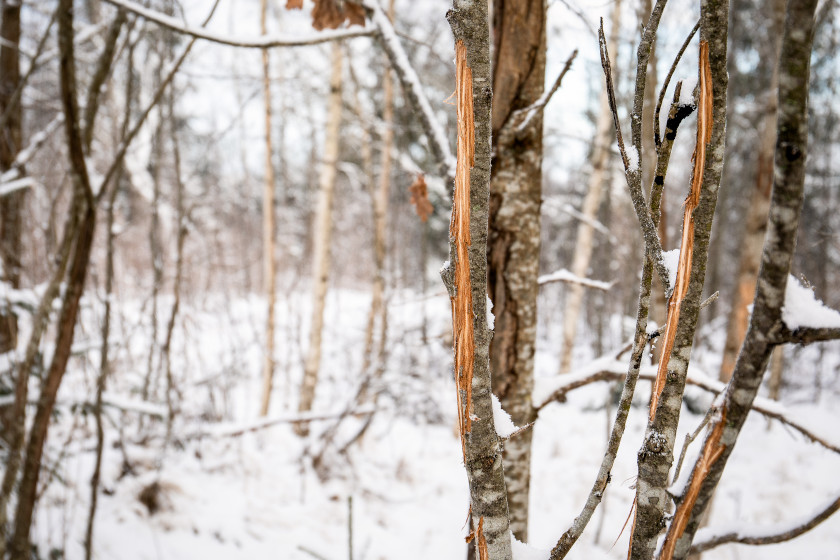
tumsasedgars via Getty Images
At one time it was believed that rubs were used exclusively to remove the velvet from the antlers once the late summer and rut approached and mature bucks got ready to quarrel. However, researchers have since determined they serve as a form of communication, both through smell and a visual display. Bucks have forehead glands that release an odor. When a buck rubs his antlers on a tree, the bone shreds the bark and leaves behind the odor that tells other deer the buck was there.
According to the National Deer Association, buck rubs communicate a bevy of information. They tell whitetail does that there is a mature buck is in the area. At the same time, they can communicate to rival bucks that the area is a specific deer's territory, and they should stay out. As the NDA further points out, there may be something deer are communicating with the scent of the tree too. If you notice more rubs on cedars or pines, you are not alone. There's a heavy aroma of shredded bark created when a deer rubs his antlers on these types of trees. It may help other deer to easily locate rubs.
It also seems likely some bucks make rubs for no reason at all. Every deer hunting enthusiast has likely found a one-off rub in a unique place that gets hit once and then seemingly never again. It seems bucks sometimes use a rub to work off their frustration during the rut. If a rival isn't around to fight, the nearest trees or saplings can work as a stand-in.
How Long Will a Buck Rub a Tree?
While many buck rubs seem to be one-off moments where the buck hits a tree once and then moves on, there are some trees they return to and rub regularly. What determines when a buck incorporates a certain tree into a regular signpost? Maybe a few different factors, including routine and time of year. Proximity to a buck's regular feeding and bedding areas likely plays a part. Trees that become regular signposts are likely located on frequently-traveled runways. During most of the year, bucks probably stick to a more regular route, but when the rut is activated, all bets are off. Bucks do a lot of wandering in search of does during the rut and they may make dozens of one-off rubs at random during their travels, much to the chagrin of hunters. During the late-season, after the rut has cooled down, the whitetails return to a more normal routine and return to their typical travel corridors.
If you are fortunate enough to find an active rub, some bucks will start using it in the early season and continue hitting it right up until the end of the rut. To find a rub like this, you need to nail down the buck's core area, which isn't easy to do for any buck over one and a half years old. It requires a lot of scouting, and a ton of monitoring of rubs using trail cameras.
Can You Tell the Size of a Buck by a Rub?
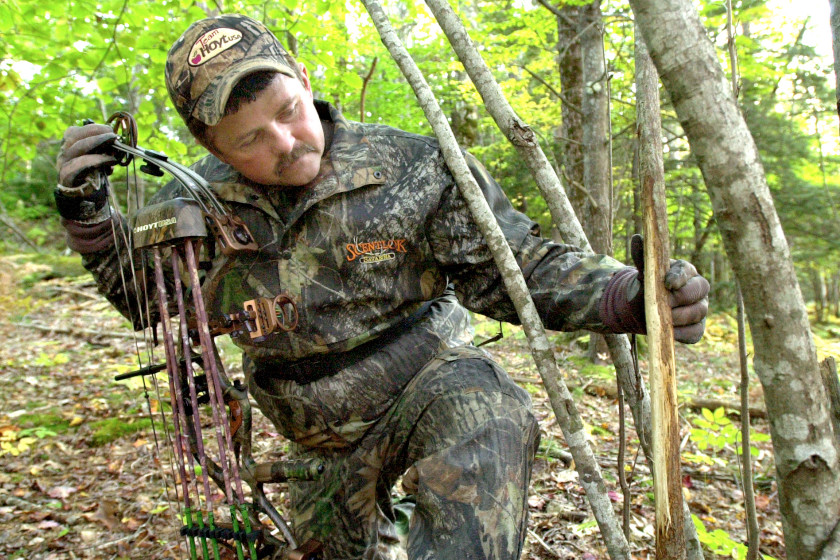
Portland Press Herald via Getty Images
The conventional thinking is that big rubs automatically equal a big buck. However, with more trail cameras than ever before in the woods, we now know this is an antiquated way of thinking. While large rubs are more likely to be a big buck, small bucks have also been documented working over trees eight to ten inches in diameter. On the flip side, a small rub does not mean a small buck either, as there are plenty of documented cases of big bucks shredding saplings into kindling. Rubs that are higher on a tree may indicate a taller, larger deer, but unless you see the deer making the rub, it's difficult to figure out a buck's size based on rubs alone.
Also, some bucks do not rub trees nearly as often as others. For instance, in 2003, I shot a 140-inch 10-pointer here in Southwest Michigan that had very little bark in his antlers, almost none. Ten years later, I shot an older buck, a roughly 115-inch 10-pointer who had bark embedded in every nook and cranny of his antlers. He had been rubbing so aggressively that there was bark all over his forehead. There were long, shredded strips of bark hanging all over the place. I was surprised an entire tree wasn't hanging in his rack!
The NDA notes that older bucks seem to rub trees more often than younger ones. In the case of that gnarly, 115-inch buck, he was an older deer with a rack on the downslope. We noticed something similar with an older buck my dad shot years ago too. In my experience, that notion seems to be true to some degree, although it's likely anyone's guess why bucks become more aggressive in their rubbing activities as they age. Ultimately, you can assume nothing about the size of the rub until you can get a trail camera on it to see the animal that's using it.
What's the Difference Between a Rub and a Scrape?
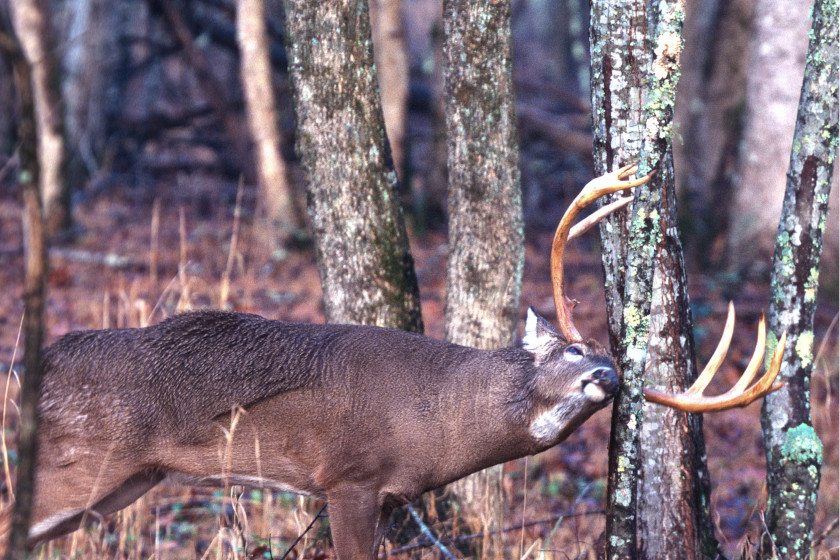
KeithSzafranski via Getty Images
We're not sure who chose to name rubs and scrapes, but as I told my editor, I'd really like a word with them. We wish they had chosen an entirely different terminology for scrapes, because there are so many similarities between the words "rub" and "scrape." Many newer hunters end up using them interchangeably. There's probably some additional confusion since bucks are essentially "scraping" the velvet off their antlers when they finish growing, while it's the term "rub" that refers to the marks deer make on trees in this way.
Scrapes are the spots of bare earth on the ground that deer tear up with their hooves. Deer also urinate into scrapes to help mark their territory. There is an additional bit of confusion here because scrapes serve essentially the same purpose of acting as a signpost for deer activity. We don't really have any tips for remembering the exact terminology of the two. It's just one of those things you need to pound into your head until you can remember the difference.
What Is the Best Way to Hunt a Rub?
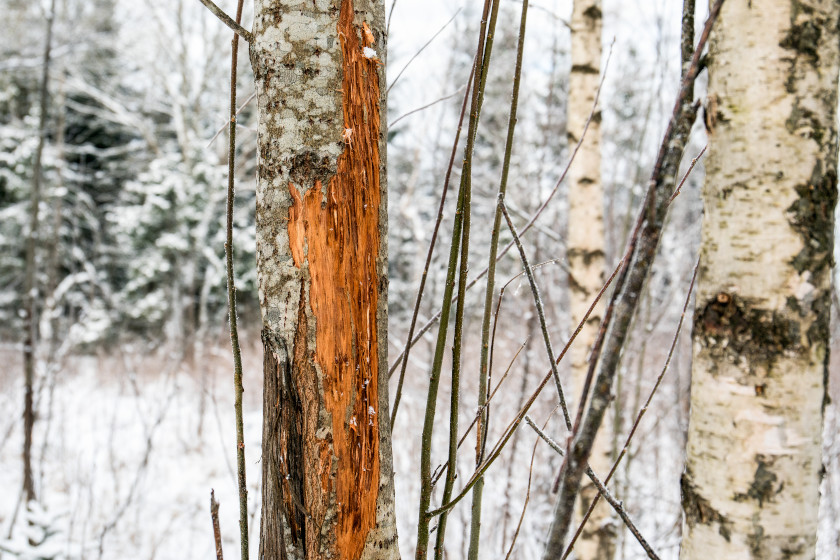
tumsasedgars via Getty Images
When you find a solid rub line along a field edge or following a trail that's being traveled frequently, it can make a dynamite spot to set up and hunt. We highly recommend monitoring a rub location with a trail camera to ensure it's going to be worth your time. You don't want to waste hunting opportunities on a one-off rub that gets hit infrequently. The great thing about rubs is they give you an indication of the side of the tree the deer was standing on when it made it. This allows you to strategically place your treestands at an angle where the buck is likely to be standing on the trail. Rubs can be especially helpful when setting up your bowhunting spots.
Try to set up on rubs that make sense. Are there scrapes, trails, a food plot, or a funnel leading to a bedding area nearby? A rub with little other fresh sign around it is more likely to be something the buck did out of frustration or boredom while wandering the area. If it's backed up with other indications, you'll have better luck.
There is a traditional line of thinking that rub lines indicate the movements of one buck along a trail. However, there have been numerous studies of rub lines that produced trail camera results indicating it's more likely to be the work of multiple bucks than a lone dominant one. That makes them a solid place to setup, but don't be surprised if you get visited by a buck you weren't aware of or didn't have on camera previously.
It seems obvious, but play the wind while hunting rubs, especially those near food plots. There's a chance they'll be visited by cautious does first that could blow your cover. Pay attention to the times the bucks are visiting too. It doesn't make a lot of sense to hunt a rub line that's only being visited after dark, and believe us, there are plenty of rubs that fit this definition.
As for timing, most hunters are going to be most successful on rubs during the early seasons of the pre-rut. This is when the bucks first start to feel that testosterone kicking in, and they start scrapping trees out of pure frustration more than anything else. You'll almost always see the heaviest rubs between October and mid-November when the rut peaks in many Midwestern states.
